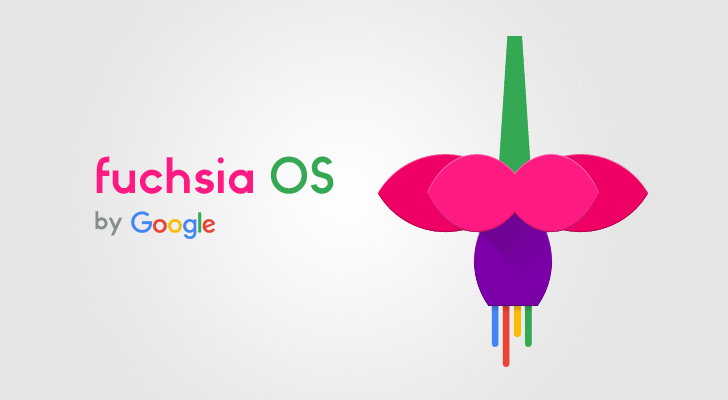We were expecting to examine Google announce Google Fuchsia OS, or Google Andromeda OS – a fusion of its Chrome and Android in operation systems – back in December month 2017.
Obviously no such announcement happened, however Andromeda, said internally as Fuchsia OS at Google, goes deeper than that. We’re expecting Google Fuchsia to require over as Google’s singular, united OS for phones, tablets and laptops.
What is Google’s Fuchsia OS?
Google’s Fuchsia OS is an operating system that was initial proclaimed in 2016. The OS will run on embedded devices, smartphones and PCs. The OS relies on a microkernel that Google is named Magenta Kernel, now Zircon, whereas android OS is predicated on open source UNIX system code.

As according earlier, Google’s new OS is predicted to return with a re-imagined UI, that is based on Flutter, “a heavily optimised, mobile-first 2d rendering engine (with wonderful support for text)”.
What’s new in Google’s Fuchsia OS?
New Attractive UI
The Fuchsia interface will be written in Flutter SDK which is supported across platforms. It means that a part of it can run on an Android device.
See this : Which Language is Good for Android by Analyze APK sizes?
Check New UI in your Android phone
Downloading the source and compiling Fuchsia’s System UI into an Android APK allows one to install it on an Android device, giving an idea of how the whole UI has been re-imagined. The home screen, keyboard, home button are all new although nothing actually works. The source also has a readme file that describes how the interface actually works.
Vertical list Home Screen
The home screen has a long vertically scrolling list with the user’s profile picture, date, time, location and a battery icon in the center. Right above that are some cards called ‘Story’ which are said to be the recent apps and below it is a list of suggestions similar to Google Now The home button which is a single white circle, pops up from the bottom of the screen.
Best for you : Top 5 Trending Android Libraries – April 2018

Common setting at Home
Tapping on the profile picture brings up the menu which is similar to Android’s quick settings. There are icons for battery, connectivity, airplane mode, do not disturb, and auto rotate as well as sliders for volume and brightness. Below that are buttons for ‘log out’ and ‘more’. Of course none of these icons work on Android.
Card view with List View
The list is sorted by last opened so the most recently used cards will be at the bottom of the list. Tapping on any card opens a full-screen interface.
You must see : CardStackView : Tinder like Swipeable CardView
Split screen integration
There is also a window-management feature where a long press on a card lets you drag it around, and if you drop it on top of another app, it opens the split screen mode.
Keyboard layout
There is also a new keyboard with a custom Fuchsia interface with a new dark theme, and things like long-pressing for symbols or settings do not work. There is also a mockup of Google Now, which offers several suggestion cards which seems different from Google Now’s news, weather, and calendar suggestions.
Use this once : Android Crumbling Image SlideView
Assistant-first
Assistant in Android can inspect your screen for information for its use if you hold the home button, but it seems Fuchsia will provide even deeper access. In Fuchsia, you can be in your browser looking at reviews for a restaurant, then you open your calendar to check a date, then say “Okay Google, invite Samantha to lunch” and it would have all that context.

Cross-device OS
Google describes Ledger as “a distributed storage system for Fuchsia.” Everything is stored in the cloud.

Image: ArsTechnica
The idea is a futuristic but cool one: Close Chrome on your phone, then open it on your laptop and your tabs are right where you left them. The document you forgot to save before you left work? Just open Docs on your phone and save it. Your battery died right in the middle of a research project? Borrow a public computer and pick up where you left off.
Architectural benefits over Android/Chrome OS
Fuchsia avoids these pitfalls by using its own custom kernel, Zircon, which is designed to be consistently upgradeable. To help make this possible, applications are isolated from having direct kernel access. This both gives an extra layer of security and prevents apps from being incompatible after a system upgrade, a problem that has plagued Android before.
There is no report of the release date of the Fuchsia OS by Google. We can expect more information to be revealed by the company at the annual Google I/O Conference that will start from 8 May 2018.


Share your thoughts